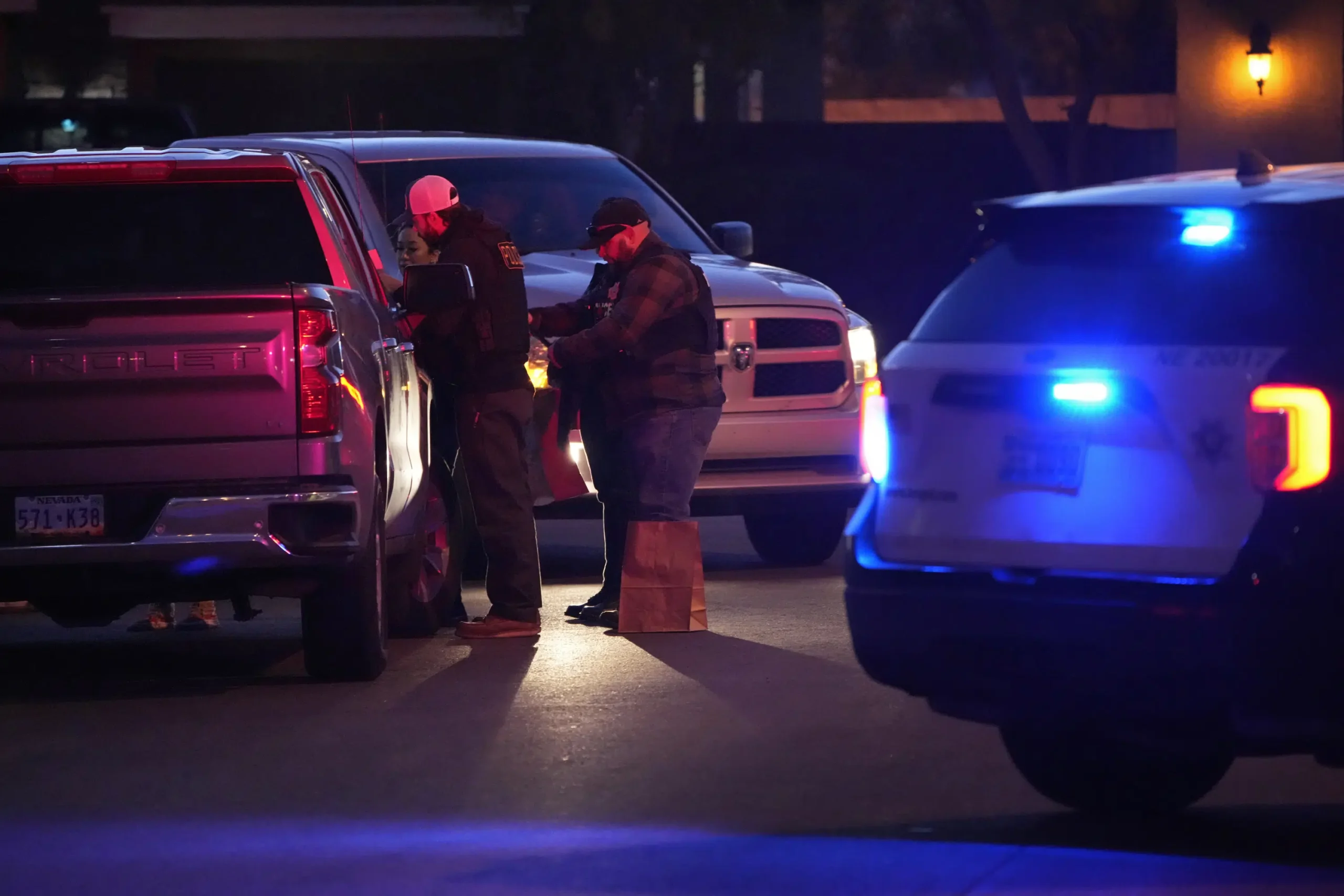The governor of California on Friday blocked the parole of Charles Manson follower Patricia Krenwinkel more than five decades after she scribbled “Helter Skelter” on a wall using the blood of one of their victims.
Governor Gavin Newsom said Krenwinkel, now 74, still poses too much of a public safety risk to be released.
“Ms. Krenwinkel fully accepted the racist and apocalyptic ideologies of Mr. Manson,” Newsom said. “Ms. Krenwinkel was not only a victim of Mr. Manson’s abuse. She also contributed significantly to the violence and tragedy that became the legacy of the Manson family.”
A two-member parole board for the first time in May recommended that Krenwinkel be releasedafter she had already been denied parole 14 times.
Newsom previously dismissed parole recommendations for other subscribers of Manson, who died in prison in 2017.
Reed Saxon/AP
Krenwinkel became the state’s longest-serving inmate when Manson follower Susan Atkins died of cancer in prison in 2009. Her attorney, Keith Wattley, said he understands Krenwinkel was the most oldest in the United States.
She and other followers of the cult leader terrorized the state in the late 1960s, committing crimes that Newsom said “were among the most chilling in California history.”
She was convicted of murdering pregnant actor Sharon Tate and four others in 1969. She helped kill grocer Leno LaBianca and his wife Rosemary the following night in what prosecutors say was an attempt by Manson to start a race war.
Newsom agreed that she did well in prison, went through numerous rehabilitation and education programs, and “showed effusive remorse”. But he concluded that “his efforts have not sufficiently reduced his risk of future dangerousness”.
She still doesn’t have a good enough idea of what led her to commit the crimes or her “antisocial thought and behavior triggers” during bad relationships, Newsom said.
“Beyond the brutal murders she committed, she served as a leader in the cult and an enforcer of Mr. Manson’s tyranny. She forced the other women in the cult to obey Mr. Manson and stopped them from escaping when they tried to leave,” he said.
Wattley did not immediately respond to phone and email messages seeking comment on Newsom’s decision.
But Anthony DiMaria, nephew of Jay Sebring, one of Krenwinkel’s victims, had urged Newsom to block his release “due to the rare, serious and flagrant nature of his crimes”. He said his actions instigated “the entire Helter Skelter legacy that left permanent historical scars” and inspired at least two ritualized murders years later.
New laws since Krenwinkel was last denied parole in 2017 have forced the parole board to consider that she committed the murders at a young age and is now elderly.
Also, for the first time, Los Angeles County prosecutors were not at the parole hearing to object, under District Attorney George Gascón’s policy that prosecutors should not be involved in deciding whether prisoners are ready for release.
She and other participants were first sentenced to death. But they were sentenced to life with the possibility of parole after California’s death penalty was briefly declared unconstitutional in 1972.
Krenwinkel was 19 and living with her older sister when she met Manson, then 33, at a party at a time when she said she felt lost and alone.
“He seemed a little larger than life,” she testified in May, and she began to feel “that somehow his view of the world was the right one, was the right one” .
She said she left with him for what she thought was a relationship with “the new man in my life” who, unlike others, told her he loved her and that she was beautiful.
Manson “had answers that I wanted to hear…that I could be loved, that I could have the kind of affection that I was looking forward to in my life,” she said.
Instead, she said Manson abused her and others physically and emotionally while demanding that they trust him without question, testimony which led the parole board to conclude that Krenwinkel had been a victim of domestic violence at the time.
It took about two years of travel and drug use until he started to emerge as “the Christ-like figure who was leading the cult” who started talking about starting a race war and asking his supporters, “would you kill for me? And I said yes.”
During her 2016 parole hearing, Krenwinkel recounted how she repeatedly stabbed Abigail Folger, 26, a coffeehouse heiress, at Tate’s home on Aug. 9, 1969.
The following night, she said Manson and his right-hand man, Charles “Tex” Watson, told her to “do something wizarding,” so she stabbed La Bianca in the stomach with a fork, then took a rag and wrote “Helter Skelter,” “Rise” and “Death to Pigs” on the walls with his blood.
The bone-handled fork “was part of a set we used on the holidays … to carve our turkeys,” the couple’s nephew, Louis Smaldino, told parole officials, calling Krenwinkel a “vicious killer and indifferent”.
Sharon Tate’s sister, Debra Tate, the last surviving member of her immediate family, was among the victims who dismissed Krenwinkel’s explanation that she was driven to Manson by drinking and a family that didn’t tell her. didn’t support growing up.
“We all come from troubled homes and we haven’t decided to go out and brutally kill seven strangers,” Tate told parole officials.



































































0